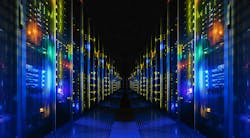Solar Startup Powering Data Centers Gains $14.5M Funding for Illinois Projects
A startup focused on building solar energy installations to power new data centers in Illinois gained a $14.5 million funding boost to push the projects closer to completion.
SunRocket Capital, formerly known as Sol-REIT LLC., announced three separate construction-to-permanent funding transactions with Donato Solar. The $14.5 million in financing for the first quarter of this year is connected to three solar data center projects totaling 9.24 MW in capacity.
The solar fields, in addition to directly powering the data centers, are designed to overproduce during the day and provide excess electricity into the main grid. Donato Solar received local approvals for the projects in late 2022 and has already started work on at least one of the installations planned for Champaign County, according to news reports.
The financing with SkyRocket Capital will eventually extend to Donato Solar’s planned pipeline of 100 MW in projects, totaling close to $100 million in financing. Anthony Donato is a longtime Chicago area businessman who, in addition to starting Donato Solar in early 2022, is the CEO of data center-focused development firm GAIL Technology Inc., which was formed several years earlier.
“The team at SunRock Capital has proven to be an exceptional financial partner,” Donato said in a statement. “They operate with speed and efficiency and are very knowledgeable regarding solar development, a unique and important component of helping expedite financing.”
Each of the Donato Solar projects reportedly will also receive solar renewable energy credits (RECs) awarded through the Illinois Power Authority’s program known as Illinois Shines. The RECs are allocated with the goal of 15-year power generation lifespans.
The Future of Electrification Needs Microgrids
Find Out More at the Microgrid 2024 Conference
April 22-24 in Baltimore: Join the Revolution in Energy
The growth of data centers, particularly in the sector of hyperscale and artificial intelligence capabilities, is stressing the traditional power generation portfolio.
The industry has always required on-site backup power, typically diesel generators, but it seeks sustainability goals and future carbon-free energy alternatives such as solar, battery storage, renewable natural gas, and even small-scale nuclear.
Data giants like Meta, Google, and Microsoft are pursuing future projects centered around hydrogen fuel cells, biofuels, and renewables, including microgrids.
About the Author
Rod Walton, EnergyTech Managing Editor
Managing Editor
For EnergyTech editorial inquiries, please contact Managing Editor Rod Walton at [email protected].
Rod Walton has spent 17 years covering the energy industry as a newspaper and trade journalist. He formerly was energy writer and business editor at the Tulsa World. Later, he spent six years covering the electricity power sector for Pennwell and Clarion Events. He joined Endeavor and EnergyTech in November 2021.
Walton earned his Bachelors degree in journalism from the University of Oklahoma. His career stops include the Moore American, Bartlesville Examiner-Enterprise, Wagoner Tribune and Tulsa World.
EnergyTech is focused on the mission critical and large-scale energy users and their sustainability and resiliency goals. These include the commercial and industrial sectors, as well as the military, universities, data centers and microgrids. The C&I sectors together account for close to 30 percent of greenhouse gas emissions in the U.S.
He was named Managing Editor for Microgrid Knowledge and EnergyTech starting July 1, 2023
Many large-scale energy users such as Fortune 500 companies, and mission-critical users such as military bases, universities, healthcare facilities, public safety and data centers, shifting their energy priorities to reach net-zero carbon goals within the coming decades. These include plans for renewable energy power purchase agreements, but also on-site resiliency projects such as microgrids, combined heat and power, rooftop solar, energy storage, digitalization and building efficiency upgrades.

